Disclaimer: Use the information provided here at your own risk. I do not take any responsibility for any resulting damage.
This adapter is based in the cheap PIC16F18313 microcontroller following Visenri's indications. It has the following pros:
- It automatically detects the polarity of the input VGA sync signals and configures the configurable logic cells (CLC) of the PIC dynamically to generate the SCART composite sync signal correctly.
- If the frequency of the VGA horizontal sync signal is wrong or if the VGA vertical sync signal does not change then the PIC disables the SCART composite sync signal, the SCART RGB selection signal and the SCART status signal.
- Most VGA devices can provide enough power to the PIC so no external power source is required.
- No external power source nor DC-DC converter is required to generate the 12V of the SCART status signal. It can be generated by the PIC itself as noted by Visenri.
- Optional aspect ratio selection.
- Optional LEDs to test the power and input sync signals.
- Optional power source selection.
- The basic circuit only requires the PIC and a pair of resistors and capacitors.
- The full circuit fits in a (big) DE-15 enclosure using a single sided PCB and easy to solder through-hole components.
1 Pin outs
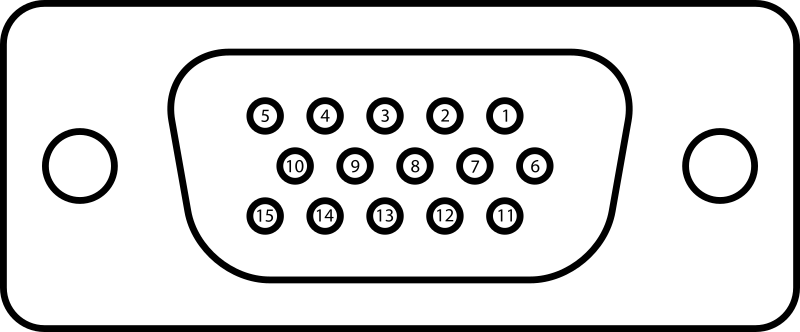
PIN # |
name | description |
|---|---|---|
| 1 | RED | Red video |
| 2 | GREEN | Green video |
| 3 | BLUE | Blue video |
| 4 | ID2/RES | formerly Monitor ID bit 2, reserved since E-DDC |
| 5 | GND | Horizontal sync ground |
| 6 | RED_RTN | Red return |
| 7 | GREEN_RTN | Green return |
| 8 | BLUE_RTN | Blue return |
| 9 | KEY/PWR | formerly key, now +5V DC, powers EDID EEPROM chip on some monitors |
| 10 | GND | Vertical sync ground |
| 11 | ID0/RES | formerly Monitor ID bit 0, reserved since E-DDC |
| 12 | ID1/SDA | formerly Monitor ID bit 1, I²C data since DDC2 |
| 13 | HSync | Horizontal sync |
| 14 | VSync | Vertical sync |
| 15 | ID3/SCL | formerly Monitor ID bit 3, I²C clock since DDC2 |
Table 1: Pin out of a female DE-15 connector functioning as a VGA output from wikipedia
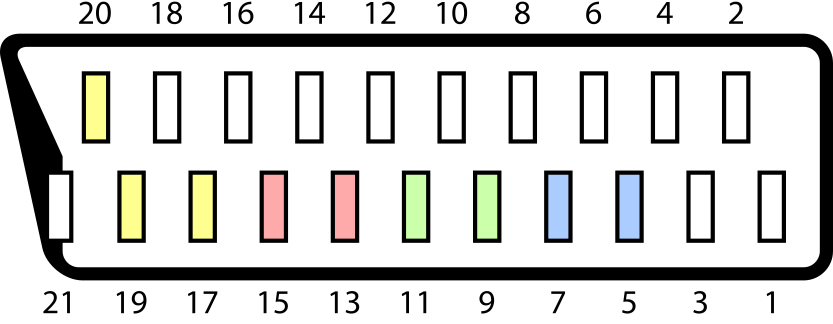
PIN # |
description |
|---|---|
| 1 | Audio output (right) |
| 2 | Audio input (right) |
| 3 | Audio output (left/mono) |
| 4 | Audio ground |
| 5 | Blue ground |
| 6 | Audio input (left/mono) |
| 7 | Blue |
| 8 |
Status & Aspect Ratio 0–2 V → off +5–8 V → on/16:9 +9.5–12 V → on/4:3 |
| 9 | Green ground |
| 10 | not used in this project |
| 11 | RGB Green |
| 12 | not used in this project |
| 13 | Red ground |
| 14 | pin 8 ground |
| 15 | Red |
| 16 |
RGB selection 0–0.4 V → composite 1–3 V → RGB |
| 17 | Composite sync ground |
| 18 | pin 16 ground |
| 19 | Composite sync output |
| 20 | Composite sync input |
| 21 | Shell/Chassis |
Table 2: Pin out of a SCART connector from wikipedia
2 Connections
2.1 Common ground
The HSync ground (VGA pin 5), VSync ground (VGA pin 10), ID0/RES (VGA pin 11), status ground (SCART pin 14), composite ground (SCART pin 17), RGB selection ground (SCART pin 18) as well as the ground of the PIC and the external power sources (if used) must be wired together.
2.2 Power source
In this project, the PIC requires a power source of 5V. If the device generating the VGA signal is not very old, it will probably provide 5V through the pin 9 of the DE-15 connector. If it complies with the DDC host system standard then it will supply at least 300 mA, which is enough to power the whole circuit. So, you can probably connect the Vdd pin of the PIC to the VGA pin 9 and you will not need an external power source. Just in case, I included a switch and a mini-USB socket in the circuit so the power source is selectable. If the switch is in the left position, the PIC is powered by the VGA pin 9. Otherwise, it is powered by a external power source through the mini-USB connector. It is advisable to connect decoupling capacitors between the supply pins of the PIC to ensure it works properly. The manufacturer recommends two capacitors of 0.1μF and 0.01μF in parallel.
... Read more »
 SCART VADER
SCART VADER
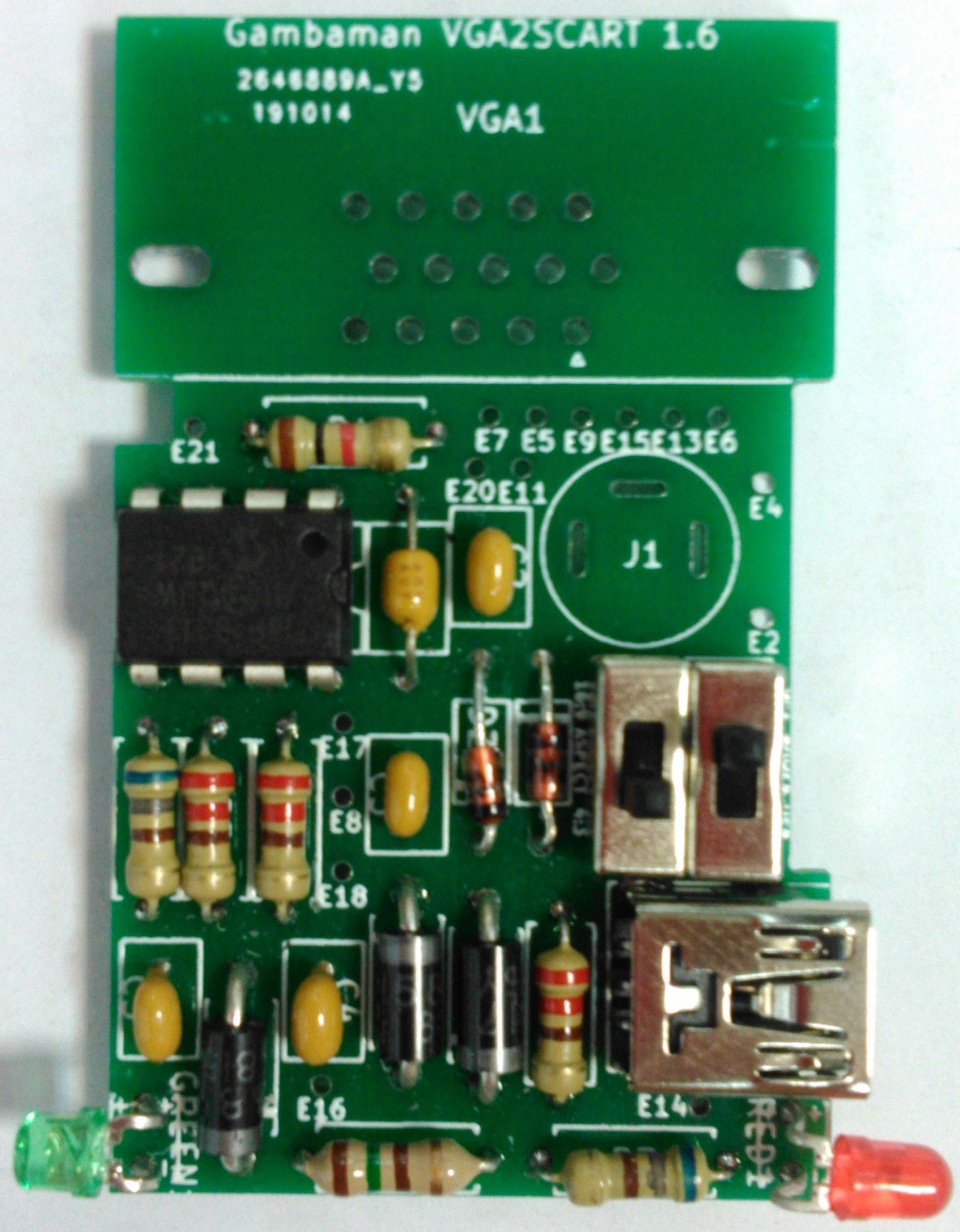


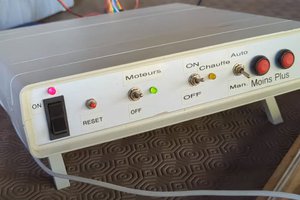
 JP Gleyzes
JP Gleyzes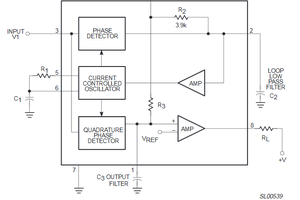
 helge
helge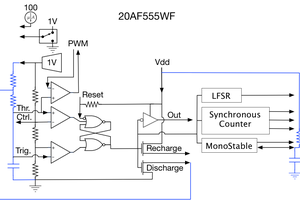
 Adrian Freed
Adrian Freed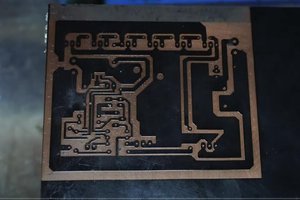
 utsourceproduct
utsourceproduct
I am happy to see they are selling another variant here: https://ultimatemister.com/product/ultimate-vga-to-scart/